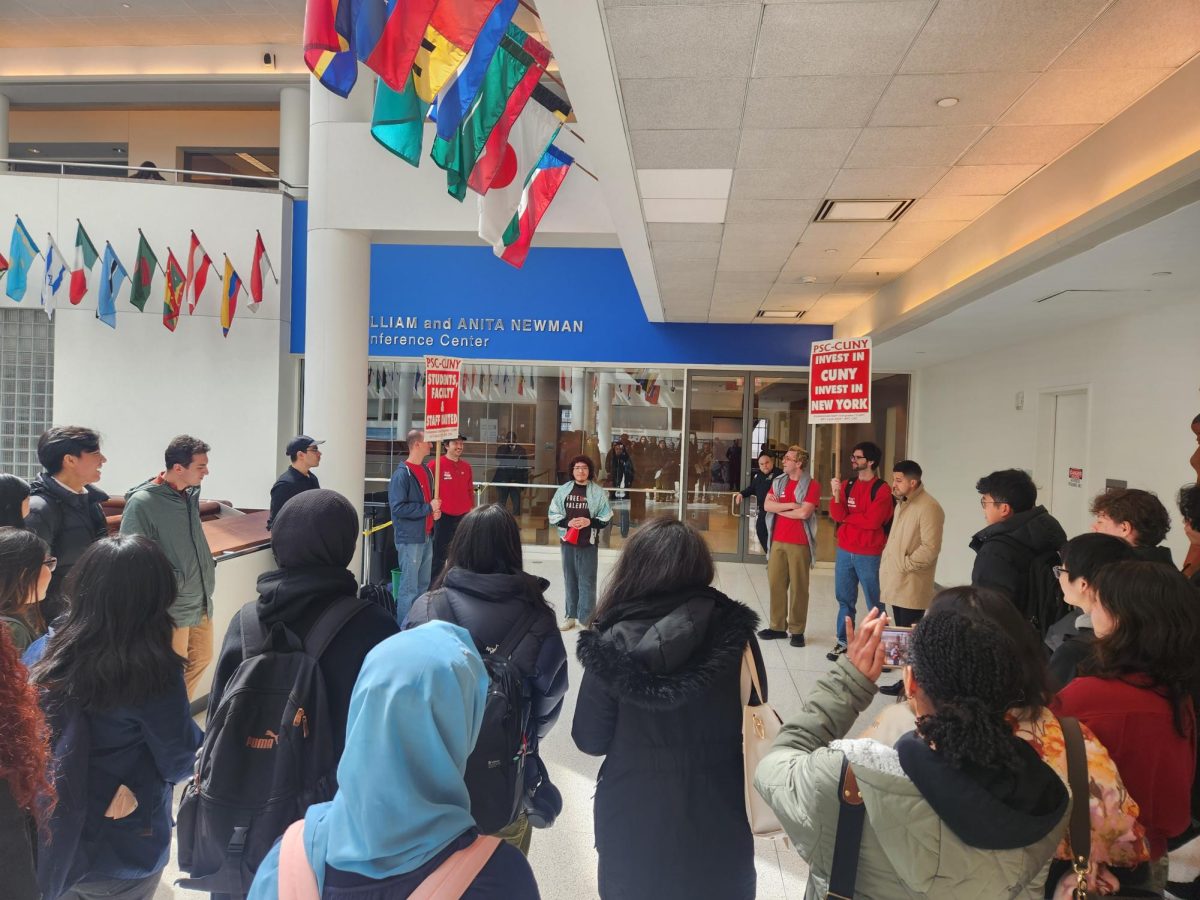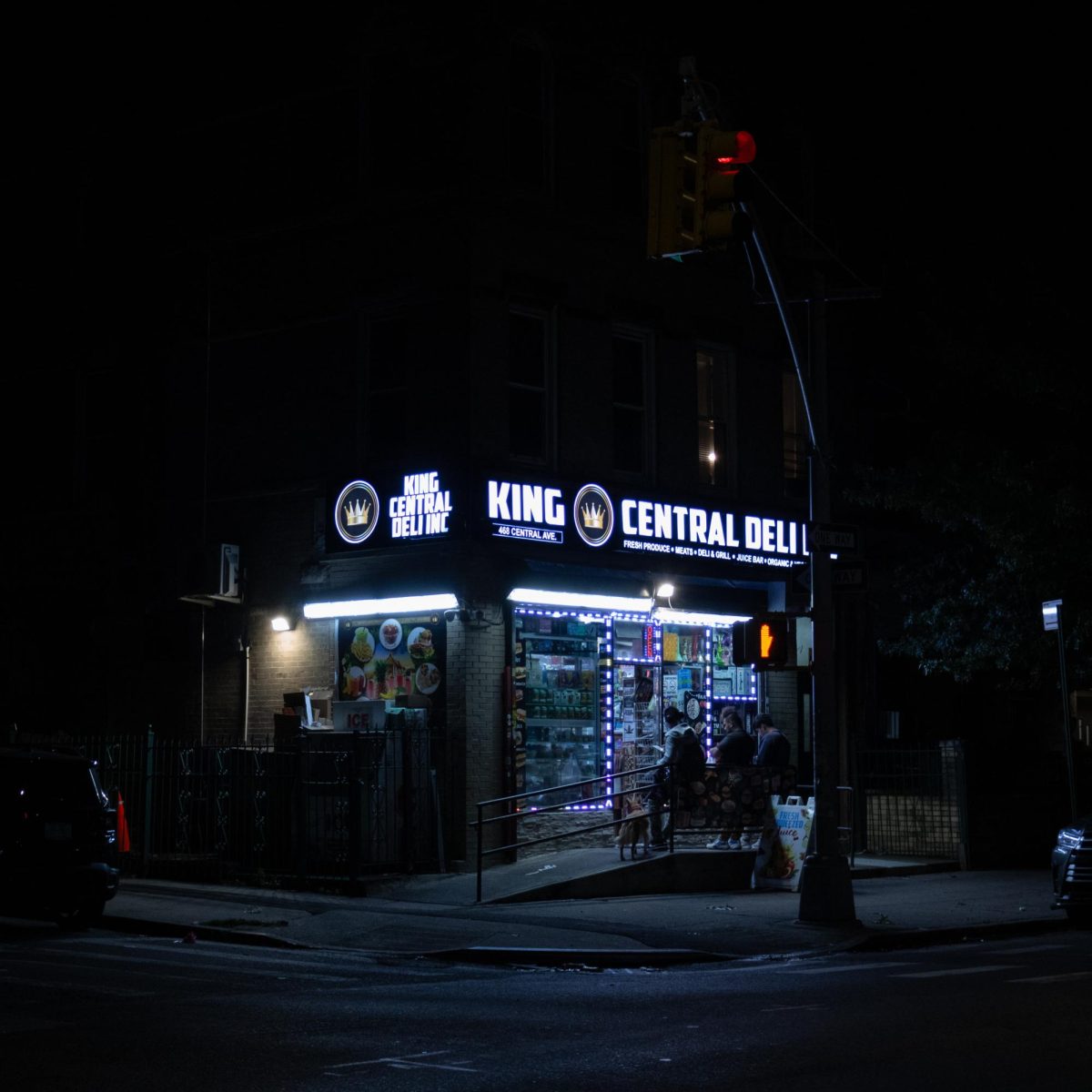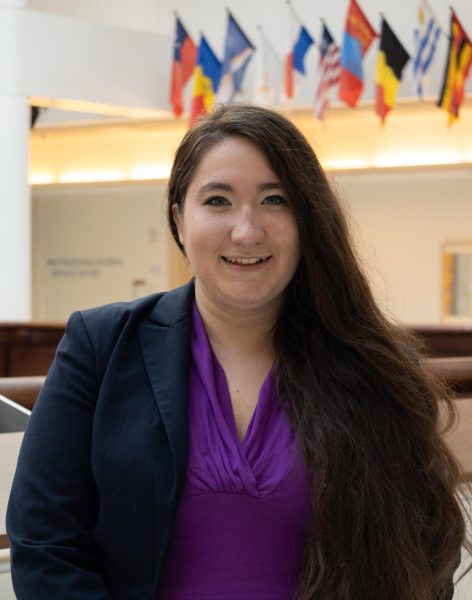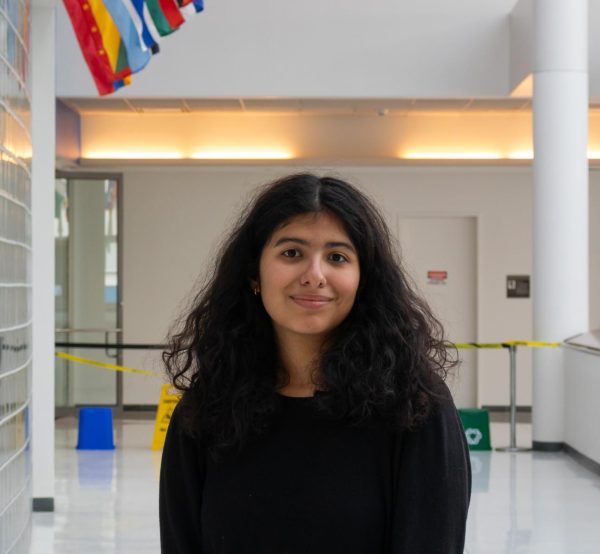Professors, faculty and students gathered in the William and Anita Newman Vertical Campus lobby, and then marched to the William and Anita Newman Library on April 4 for a rally in protest of budget cuts and an increase to the course caps in Weissman School of Arts and Sciences classes.
Members of CUNY People’s Staff Congress, the CUNY union, distributed a petition demanding “that the Provost work with the deans, department chairs, and program coordinators to find a way to reverse these cuts immediately in order to save part-time faculty jobs and offer courses with smaller class sizes to benefit student learning.”
“It’s going to adversely affect adjuncts who teach 63% of the classes here and our contingency laborers that already are underpaid, overworked and they don’t have job stability and security,” Evan Smith, a lecturer in the English department and vice-chair of PSC-CUNY, said at the protest. “They’re going to be the ones who lose sections, not the full-time teachers here. So it’s like the most exploited laborer at campus kind of getting kicked while they’re already down.”
Protestors argued that humanities “skill based” classes bore the brunt of what the petition called instructions from administration requiring “the Weissman School of Arts and Sciences to make significant cuts to its adjunct budget.”
In March it was announced that in communication studies, course caps for COM 2020 would rise from 24 to 30 and COM 3021 from 16 to 24. Sections were then cut for fall 2024. In the English department, Great Works courses — ENG 2800 and 2850 — course caps rose from 28 to 30 students.
Protestors raised concerns that adjuncts, who are paid by the class section, would lose health insurance and income they depend on. They also raised concerns that adjuncts and full-time faculty would face an uncompensated workload increase and watch their classroom community suffer.
“Baruch is unique or at least unusual in seeking to give a student body in a big, large, underfunded, diverse institution an educational experience with a great work cornerstone,” Laura Kolb, the director of the Great Works program, said at the rally. “It is a cornerstone of humanities core class devoted to the in depth study of literary texts, that is not just for rich schools. This is a valuable enterprise, even if its value cannot be expressed in dollars, and to devalue it is, I think, a grave mistake.”
The changes were fueled by both budgetary and space concerns. Classrooms have different seat maximums and the increase in course caps enables facilities to assign classes to different rooms.
It was not announced whether the course caps and sections cut would remain in place beyond the fall 2024 semester.
Professor Timothy Aubry, the chair of the English Department, said he hoped efforts will be undertaken to reevaluate the budget and find alternate methods of addressing budget concerns.
“I don’t think they should aim to increase class sizes in any departments,” Aubry said. “Students benefit from having smaller class sizes that enable an intellectual community and individualized attention. I would only suggest there might be other costs they could look at.”
Protestors called on President S. David Wu and Provost Linda Essig to address their concerns. However, when Provost Essig passed the crowd in the library she did not engage with them.
“I know that she doesn’t actually care about students and faculty, but I thought that she would at least stop and say, ‘hey’ or pretend to listen,” Joe Riccio, an adjunct lecturer in the English department said at the rally.
Elizabeth Garies, a full-time professor in the communication department, gave a speech at the rally. She shared that she’d seen similar attempts to cut courses be unsuccessful in the past in an interview with The Ticker.
“The time for practice being decreased, instructors losing their job has happened,” Garies said. “This is why the historical perspective I have is so interesting, I think because it has happened over the years. That this wheel is being reinvented in a regular cycle, because it doesn’t work to reduce these skills, focus classes that are very important.”
In an interview with The Ticker, Kolb said she was working with Great Works instructors to figure out pedagogical approaches to address the shift.
“I think that jumping from 20 to 30, as long as inclusivity remains a central goal and the Great Works’ classroom, it’s a heavier lift, but it is within the bounds that the same sets of strategies can address,” she said.
Protestors argued that while the increase may seem slight, classes are already compromised by having too many students. One student spoke at the rally and described their COM 3150 class, where a professor had to split the class in half, by meeting with one half on one day of the week and the other half on another day of the week, so that the professor could give equal attention to all of their students and provide useful feedback.
For the fall semester, administrators and department chairs said they tried to minimize the impact on adjuncts.
“We’ve worked really hard to make sure that all of the adjunct faculty who are teaching this spring will continue to teach in the fall,” Aubry said.
In an email statement shared with The Ticker, Aubry and Kolb said “it looks like no adjunct faculty members will see a reduction in the number of sections they teach from this spring to next fall.”
Demonstrators said their concern was not just for the fall semester, but the larger implications of future cuts.
Riccio said that the demonstration itself was a sign of the Baruch community holding administrators accountable.
“I think that this was probably the first very long time that a group of students and faculty organized to even confront [Provost Essig],” he said. “It’s about knowing that she could be confronted, that she’s not immune to these random decisions and cuts and just not explaining it any further.”
“I think the main thing is to show them that students and faculty aren’t just data points or numbers in some formula for them to cut corners,” Riccio said.
Protesters urged the Baruch community to sign the petition so they can reach their goal of 500 signatures. By the time of the protest, they received over 300 signatures.
Additional reporting by Sarah Gabriel, The Ticker’s Production Assistant.












Dr. Maria L Plochocki • Apr 10, 2024 at 7:29 am
Thanks for keeping a bright light on this!
holden • Apr 9, 2024 at 3:08 pm
great coverage!!!